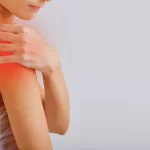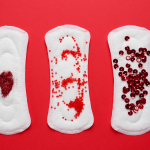What is basal cell carcinoma?
Basal cell carcinoma (BCC) is the most common and usually the least dangerous type of skin cancer. BCCs usually appear on the face, neck, back or shoulders.
BCCs start in the basal cells of the skin’s top layer (the epidermis). They grow slowly over months or years and rarely spread to other parts of the body.
BCCs make up around 3 in every 4 of all skin cancers.
See your doctor if you think you have a BCC. It is easier to treat if diagnosed early.
What are the symptoms of basal cell carcinoma?
BCCs often start with a small change in the skin, like a small bump or a flat red patch. They usually occur on parts of your body that are exposed to the sun. They grow slowly over time until they become larger and more easy to see.
Signs of a BCC include:
- a red or pearly lump or scaly area
- a sore that doesn’t heal, or heals and then gets worse again
- a sore that bleeds
- a mole, a scar or dermatitis that bleeds
What causes basal cell carcinoma?
While many factors can lead to a BCC, the main cause is sun exposure. Spending a lot of time exposed to the sun’s ultraviolet (UV) rays over a lifetime, causes changes in the structure and function of your skin cells. It can be many years before you develop the BCC. People at greatest risk of having a BCC include those with pale skin, a strong family history of BCC and those with a Celtic background.
What are the types of basal cell carcinoma?
There are 3 types of BCC:
- superficial: limited to the top layers of the skin but can be wide
- nodular: usually look like a rounded lump
- infiltrating: the most difficult to see, are often smaller than the eye can see, and not found until they have reached an advanced stage

When should I see my doctor?
See your doctor if you notice any new spots or an existing spot that changes size, shape or colour.
Most people find BCCs by checking their own skin and looking for changes. See a doctor if you find a spot, blemish, freckle or mole that:
- is different from other spots on your skin
- has changed size, shape, colour or texture
- doesn’t heal
- is itchy or bleeds
Around 1 in every 2 people with a BCC will develop another one. It is important to check your skin every 6 to 12 months and see your doctor if you notice any new spots. This is especially true if you, or a close famly member, have had a BCC before.
How is basal cell carcinoma diagnosed?
If you notice any changes to your skin, your doctor will examine your skin, and they may take a small sample from the area to test in the lab (a biopsy) to check if it is a BCC.
Your GP may treat the BCC, or may refer you to a dermatologist (a doctor who specialises in skin) for more tests or treatment.
How is basal cell carcinoma treated?
BCCs can almost always be successfully treated. The treatment will depend on the type, size and location of the BCC, as well as on your age and health. If the BCC was removed during the biopsy, you may not need any further treatment.
Surgery is the most common treatment for a BCC. It involves cutting out the skin spot and nearby normal-looking tissue. The tissue that is removed will be sent to a pathologist to check that there is no cancer in the tissue around the skin spot. If cancer cells remain, you may need more surgery. Mohs micrographic surgery is a special type of surgery used in some situations. The affected area is removed layer by layer and checked under the microscope at the time of the surgery to ensure it is completely removed. If you are having surgery to remove a BCC, ask your doctor if Mohs surgery is right for you.
Other BCC treatment options include:
- freezing the area with liquid nitrogen (cryotherapy) to kill the cancer cells
- scraping off the spot, then using low-level electric current to seal the wound and kill cancer cells
- creams, liquids and lotions that activate your immune system to destroy superficial BCCs (immunotherapy)
- photodynamic therapy, which uses a light source and cream to treat superficial BCCs
- chemotherapy for skin cancers that affect the top layer of skin, applied to the skin as an ointment or cream
- radiotherapy which uses doses of radiation for certain BCCs where surgery can’t be used
How is basal cell carcinoma prevented?
The best way to prevent BCCs is to protect your skin from exposure to the sun’s UV radiation, including to:
- avoid going out in the sun when the UV Index is higher than 3 which can be checked on the SunSmart app
- seek shade, wear a hat, sunglasses and clothing that protect you from the sun
- always use an SPF30+ (or higher) sunscreen
- never use tanning beds.




